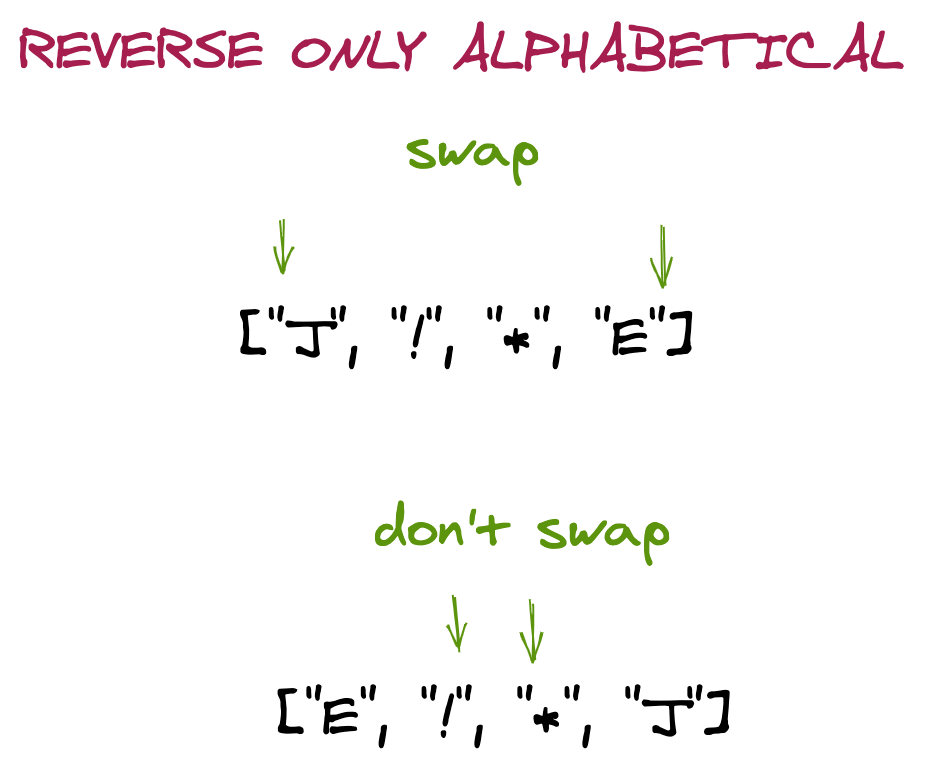Navigating the Loop: Advanced Tips
This approach beautifully sidesteps non-alphabetical characters. But let's talk about the "how" for a moment. To ensure accuracy, remember to iterate the reversedAlpha array independently from the loop that scans the original string.
Optional: Simplifying with .shift()
If the thought of juggling another pointer or index leaves you dizzy, here's a simpler alternative: use the .shift() method. This function efficiently grabs the left-most element in an array, essentially doing the pointer's job for you. Imagine it as having a helper who hands you each reversed "gold coin" as you walk along your original path.
Method 2: The Two-Pointer Skip Technique

Dual Pointers with a Twist
The second approach also involves using two pointers, much like our first method. However, this one comes with a twist: it skips over the non-alphabetical characters directly.
How to Skip Efficiently
Just like in a dance, when a couple realizes they are out of sync, they adjust their steps. Similarly, if either of the pointers encounters a non-alphabetical character, it simply "dances" past it, without making a swap.
By adopting this approach, you get to keep the original sequence of non-alphabetical characters intact while reversing only the alphabets. Think of it as flipping some tiles on a mosaic floor without disturbing the overall pattern.
1package main
2
3import (
4 "fmt"
5 "unicode"
6)
7
8func isAlpha(c rune) bool {
9 return unicode.IsLetter(c)
10}
11
12func swap(arr []rune, a int, b int) {
13 t := arr[a]
14 arr[a] = arr[b]
15 arr[b] = t
16}
17
18func reverseOnlyAlphabetical(s string) string {
19 arr := []rune(s)
20 left := 0
21 right := len(arr) - 1
22
23 for left < right {
24 if !isAlpha(arr[left]) {
25 left++
26 } else if !isAlpha(arr[right]) {
27 right--
28 } else {
29 swap(arr, left, right)
30 left++
31 right--
32 }
33 }
34 return string(arr)
35}
36
37func main() {
38 fmt.Println(reverseOnlyAlphabetical("sea!$hells3"))
39}